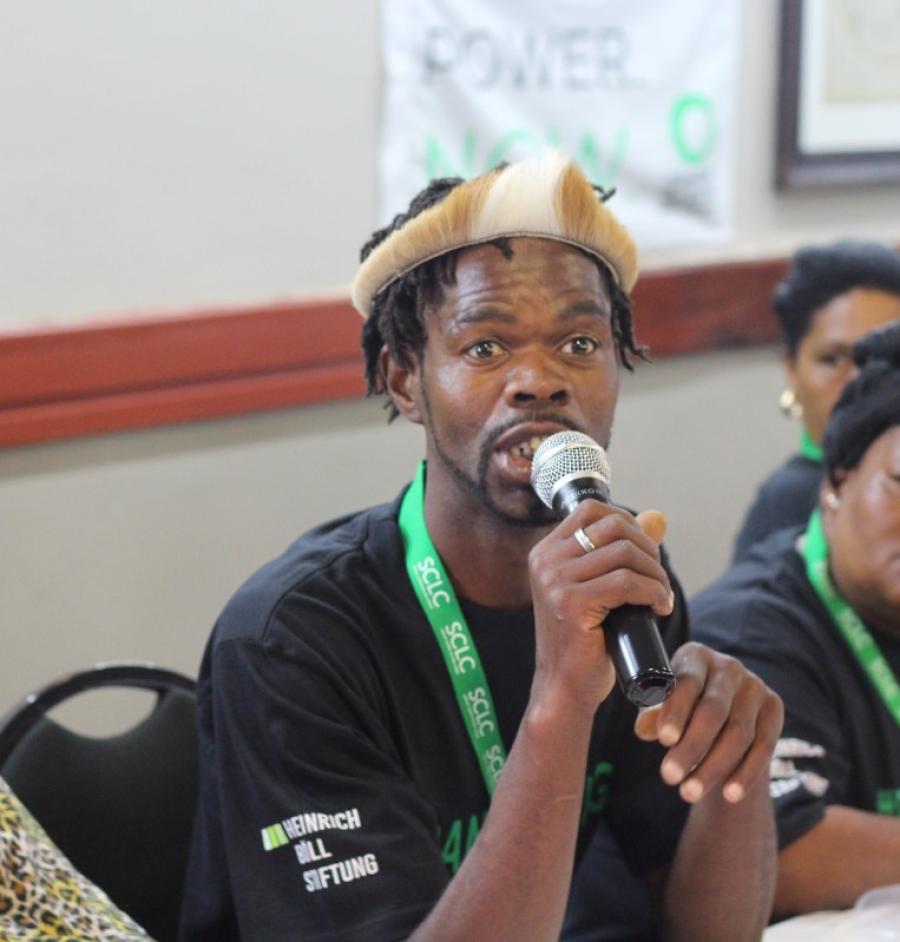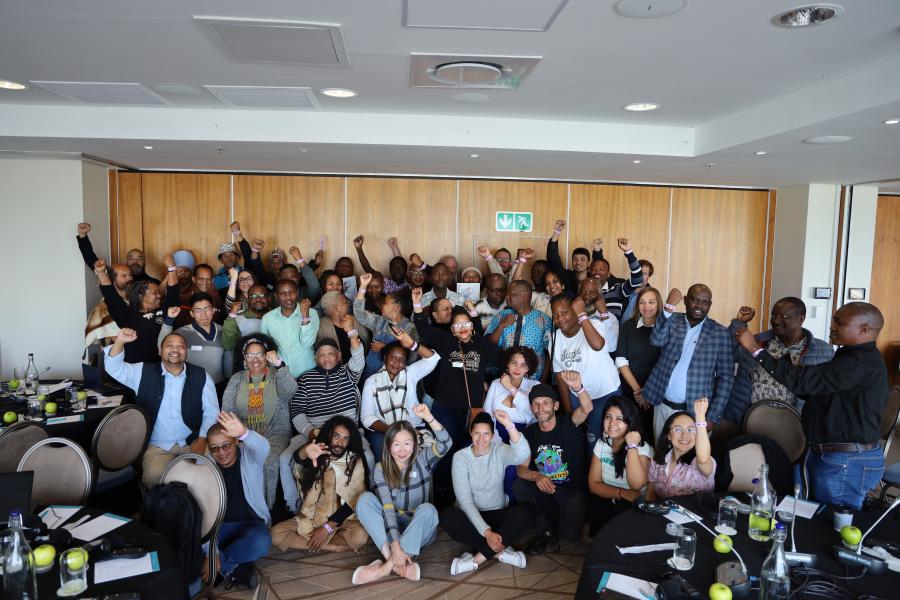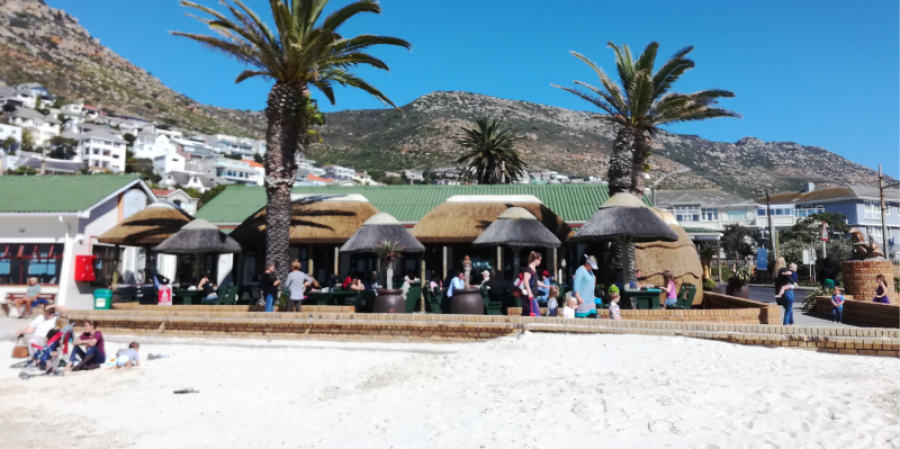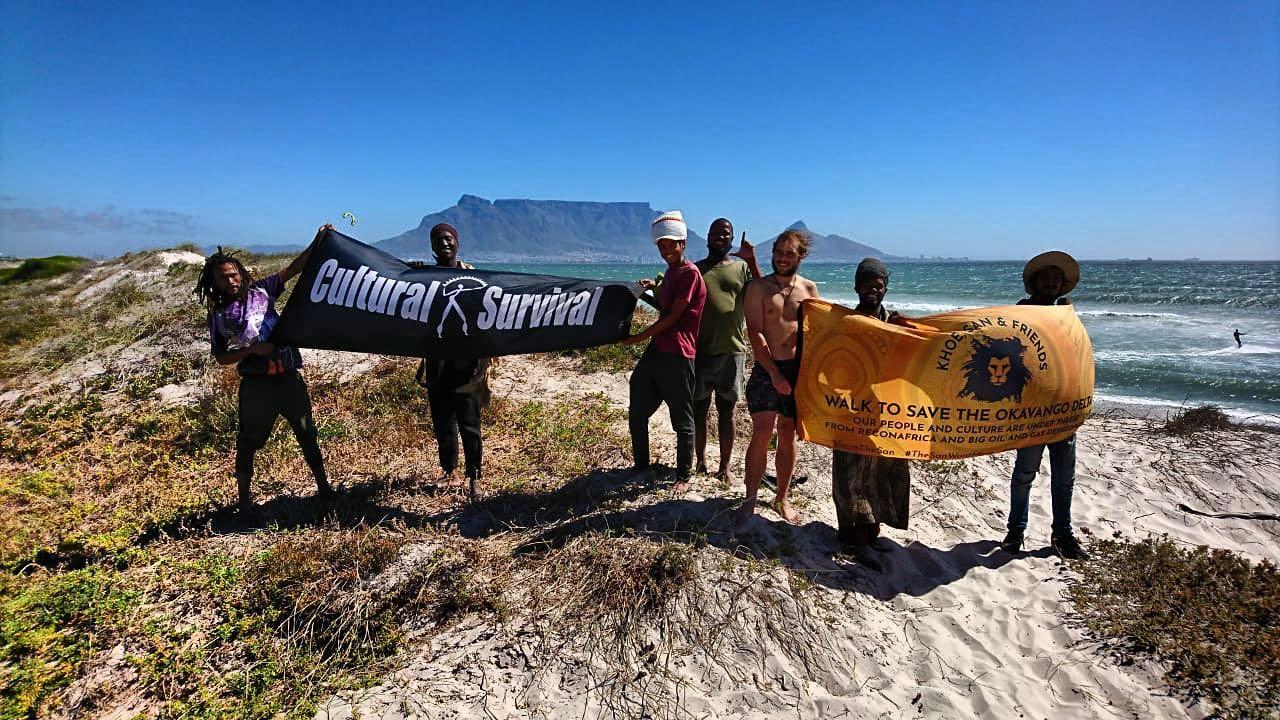
By David O'Beirne
My alarm went off on a rainy morning in Knysna, South Africa. It was the first of February 2021, the date myself and eight others had been eagerly awaiting for months prior. The nerves we had been feeling the night before had settled, we were feeling focused and eager to start walking. As a group of six San leaders and supporters we would begin a journey on foot from Knysna to Cape Town, South Africa. The #IndigiWalk, the Walk to Save the Okavango Delta, was in the footsteps of Indigenous ancestors who once followed a great cycle of life through the seasons around the coastline of southern Africa. As walkers, we would pass through and connect with San and Khoe communities who are now settled along this ancient route to gather their support in defense of their spiritual motherland in the Kavango which is threatened by oil and gas exploration. We would be passing through George, Albertinia, Riversdale, Swellendam, Bredesdorp, Gansbaai, Grabow, and on to Cape Town collecting support and signatures for an objection to the extractive activities, which will be delivered to the governments of Botswana and Namibia, and other international institutions.
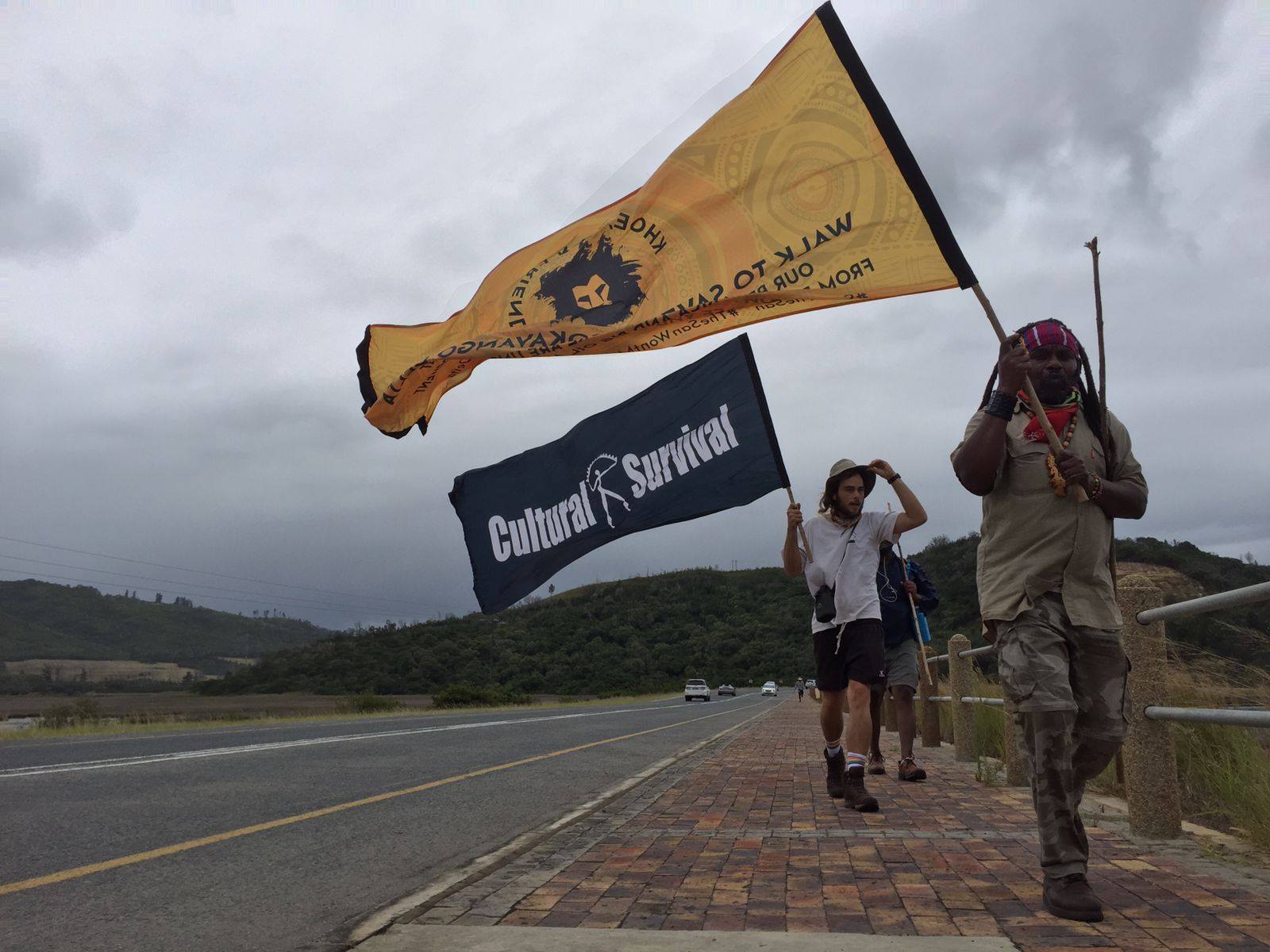
Indigenous activist Vernon De Koker (Khoisan), Craig Beckett, a San healer and medicine man, and I had spent the previous two nights with Brother Mau at his beautiful house in Judah Square, a Rastafarian community in Khayalethu, South Township. We had been shown the most unbelievable hospitality. Brother Judah, a Rasta elder, had said that we needed to have our engines fine tuned for the journey. Mau, who is a leader and activist from the Rastafarian community, cooked the most amazing food from the Judah square vegetable garden. Our energies were through the roof, our engines were ready to go, nine of us were about to walk 500 kilometers.
The #IndigiWalk, the Walk to Save the Okavango Delta, was in protest of a Canadian company, Reconnaissance Africa, which had begun test drilling in northern Namibia. If these tests are successful, they hold license to develop an area roughly the size of Belgium into an oil field. The area they are drilling in and want to develop is in the Kavango-Zambezi Transfrontier Conservation area (KAZA), the largest terrestrial inter-country conservancy in the world. Recon Africa claims that their drilling will comply with environmental regulations. The company also technically has “no plans to drill in any nature reserve,” as the KAZA is sadly not classified as a reserve. The impact of oil drilling has severe environmental and cultural impacts as seen in the Niger Delta, an absolute horror story for the surrounding environment. The Khoe and San people in the region have had culturally significant relationships with the water in the area for eons. The water snake for instance is a legend that is repeated in South Africa, that features prominently in the rites of passage for young Khoe and San girls.
This extraction was done with conventional oil drilling techniques. The prospect of fracking has been dismissed by Recon Africa, who have stated that it is not on the cards. They have, however said that, “conventional and non-conventional drilling methods” will be employed. One can’t help but wonder what unconventional methods, aside from fracking, could be used.
I studied wetland dynamics at university and the Okavango Delta is truly one of the most incredible phenomena on earth. Despite occurring in a semi-arid region, the 6000 km2 delta is flooded annually by approximately 11 cubic kilometers of water nearly doubling its size to 15 000 km2. The region is flooded in winter despite receiving a summer rainfall. This is because the majority of the flood water falls over 250 km away in the Angolan Highlands. It takes four months to travel through groundwater systems and the Quito and Cubango into the Kavango River which flows into the Okavango Delta. There are hardly any dissolved sediments in the water as it flows through Kalahari sediments which are chemically very simple, primarily quartz, meaning the water is crystal clear. Despite so much water flowing into the Delta, very little water leaves the system and most water leaves through transpiration. The remaining small amount flows out in the Boteti River and if there are any pollutants, these would end up in the delta. In a world that has been so polluted, it is incredible that we can still see this natural phenomena. This is because this region hasn't experienced the development that is seen elsewhere. It is testament to the sustainability of the Indigenous communities that live in the KAZA that these pristine waterways have been so well maintained. Because of this, the Delta has become a refuge in Southern Africa for a number of critically endangered animals and the largest herds of migrating elephants remaining in the world. Recon Africa now threatens one of the last truly wild places left on the planet. With stakes this high we began our journey.
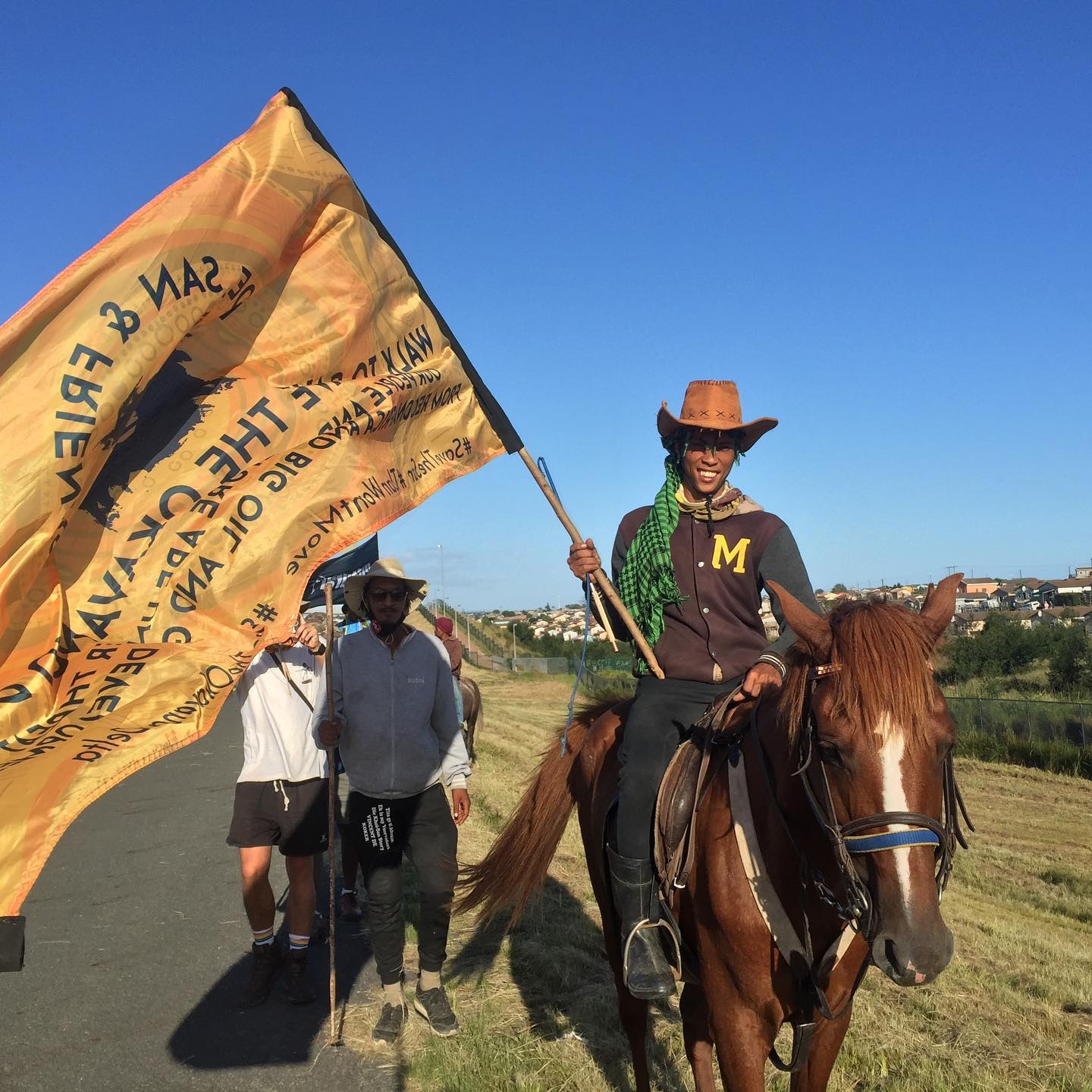
The rain had stopped and the cloud cover gave us nice shade as we started walking. Along the way we got a number of hoots in support, we didn’t realize that many people knew about what we were doing. It was sad to leave behind these beautiful people in Judah Square but we had to make it to Pacaltsdorp, 72 kilometers away, where we were told we would be met by horseback riders who would escort us into town. We were told they would meet us at a bridge outside of the town. We got to the bridge and saw two men riding two horses. They lead us to the rest of the Rasta armada; at least 30 strong. They were joined by a group of Pacaltsdorp residents including Chief Blanch, a Khoe head lady who leads the tourism sector of Pacaltsdorp, Chief Mervyn who is of Nama decent, and Khoeses Trudy from the Khoisan board of Pacaltsdorp, who greeted us by dancing, clapping, and burning mpephoe (herbs). The energy that night and the following day was electric. There was so much excitement for the future, we were standing up to the oil companies but we were also standing up for the Indigenous Peoples of Southern Africa. In Pacaltsdrop, we were joined by another five walkers making the group nine strong. Indigenous Peoples in Southern Africa are amongst the most marginalized in the world, they have endured two genocides and during Apartheid they were labelled as “Coloured” and forced out of their homelands and into coloured communities. Sadly this term has persisted into democratic South Africa and South Africans are very quick to forget who the first peoples of Southern Africa are. The impact of colonialism and then Apartheid has resulted in Indigenous people being severely marginalized. Drilling in the Kavango threatens Indigenous communities in Namibia. Namibia is home to the Nama and Herero people, who were famously part of the first colonial (German) concentration camps, pre World War I. The !Xun and Khwe are located in Chetto Village and Omega1 in the Zambezi. Other Khoe and San Peoples like the Juǀʼhoansi, Khomani, Hai||om,Tshua, ||Gana, !Xoon, who have proven to be resilient, will now face new threats in both Botswana and Namibia.
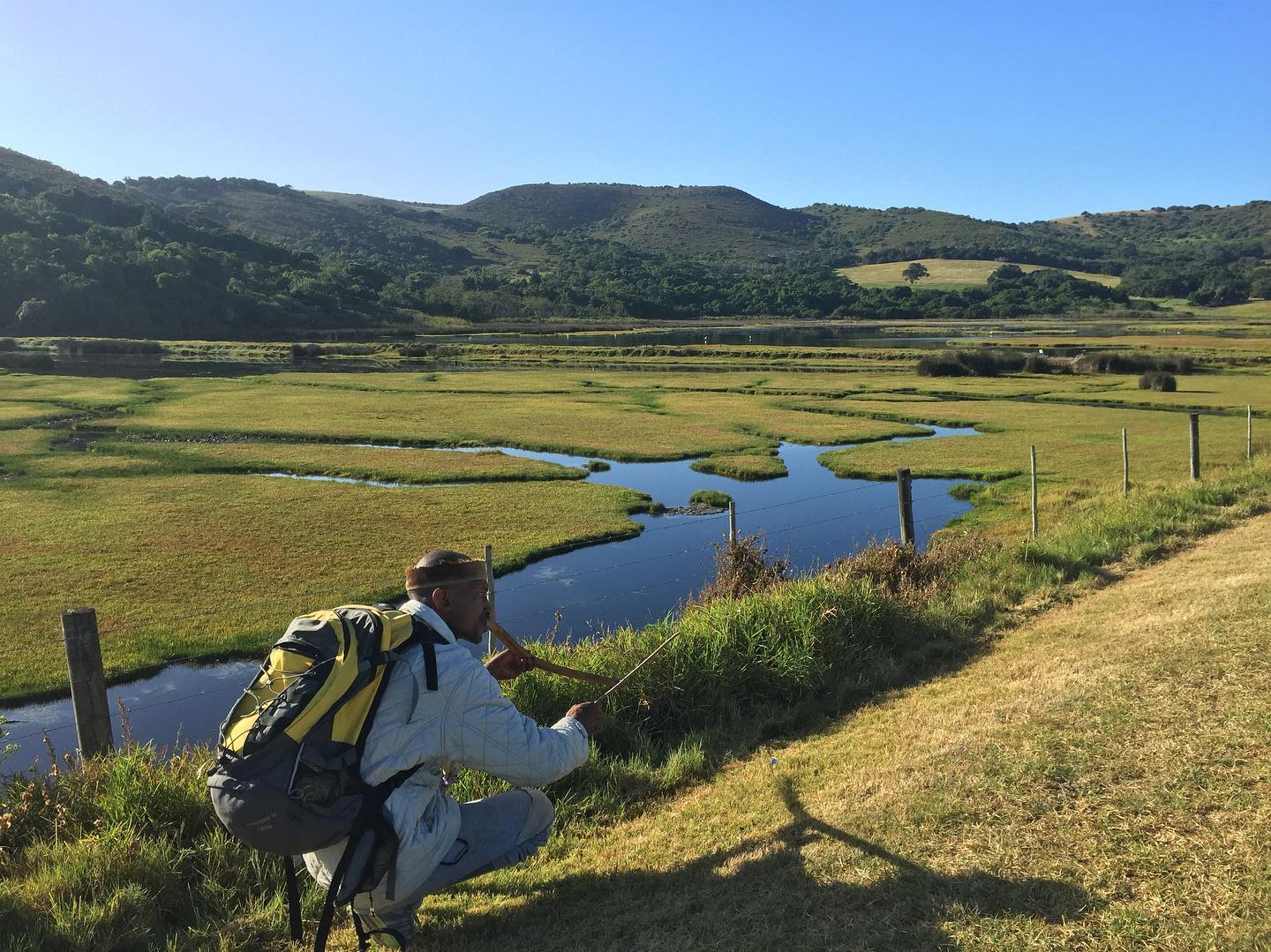
The drilling and the infrastructure required to support extraction, threatens a host of Indigenous communities, particularly the San Peoples. The San once enjoyed a nomadic lifestyle, moving around Southern African in search of food and medicinal plants, an existence that was entirely sustainable. That lifestyle has long been prohibited by the modern world. A world that today is so deeply disconnected from nature. This disconnect was felt by many during the COVID-19 lockdown. We do not know how to grow, hunt or gather our own food; our society has forgotten how to heal itself using the plants growing all around us. Indigenous people and Indigenous knowledge is essential in creating a sustainable future. We all are needed to stand up to large corporations to protect these Indigenous Peoples, not only for their sake, but for all humanity. If we do not restore this connection to nature, we will die physically but also spiritually. Western medicine is making us sick, western GMO foods are making us sick, the pollution in the air we breathe is making us sick. Indigenous leadership and knowledge carries the answers to many of today’s ills.
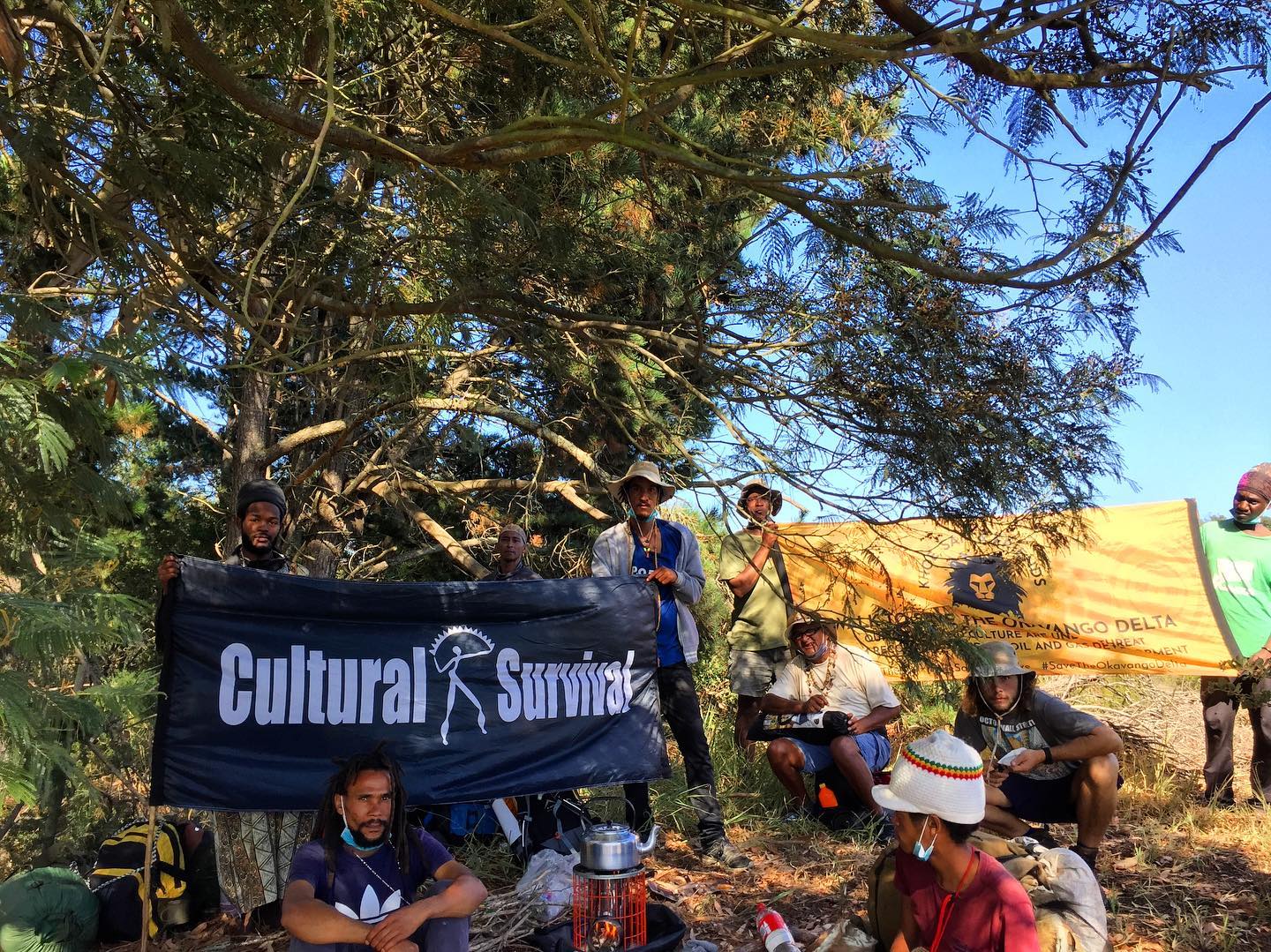
The #IndigiWalk was a way to publicize the drilling and to utilize a method of peaceful protest. San people have walked this route since before any buildings or development pockmarked the land. The walk is deeply symbolic of a return to a more natural way of life. Even with this in mind it was not possible to walk the whole way due to financial stress and not to mention the physical and emotional strain it played on all of us. With the help of friends of the cause, a few hitchhikes, and a whole lot of love; we made it to Cape Town. We handed over a petition to the Namibian embassy signed by Indigenous leaders and concerned citizens. The petition calls for the Namibian government to ensure that the Indigenous Peoples in the Okavango Delta were consulted and their Free, Prior and Informed Consent to the proposed developments in their ancestral land was obtained. The petition was supported by 94 organizations, and an estimated 3,200 online supporters. It is hard to know if this walk will have any effect against this development which oil.com is calling the “oil play of the decade” in a society that values profit way above people and the environment. However, we hope that it will raise awareness and give people hope. The world today can make one feel powerless, but we are here to remind people that they can stand up to big corporations. We often feel so powerless to the environmental and social wrongs that go on all around us, this has a deeply disenfranchising effect on our psyches. This walk was a way for us to channel this energy into something positive. It’s time to stand up as the world is at a serious tipping point and if we do not put our differences aside and unite against the system it will destroy us.
The next leg of the #Indigiwalk is scheduled to take place in Namibia in April 2021. The team will walk for 240km from Rundu to Grootfontein, then another 460km from Grootfontein to Windhoek to gain support from organizations and the Indigenous Peoples of Namibia.
Cultural Survival supported First Peoples Southern Africa’s #Indigiwalk to Save the Okavango Delta through a grant from the Keepers of the Earth Fund.
--David O'Beirne studied Geography at Rhodes University, South Africa. He is currently working for First Peoples Southern Africa as a field manager. First Peoples South Africa is a non-profit organization that works with Indigenous youth in Southern Africa. First Peoples South Africa’s primary focus is to teach youth sustainable development skills, such as natural food gardening, natural wellness, and equipping youth by teaching them about the environment.
All photos courtesy of Khoe, San & Friends: Walk to Save the Okavango Delta.
